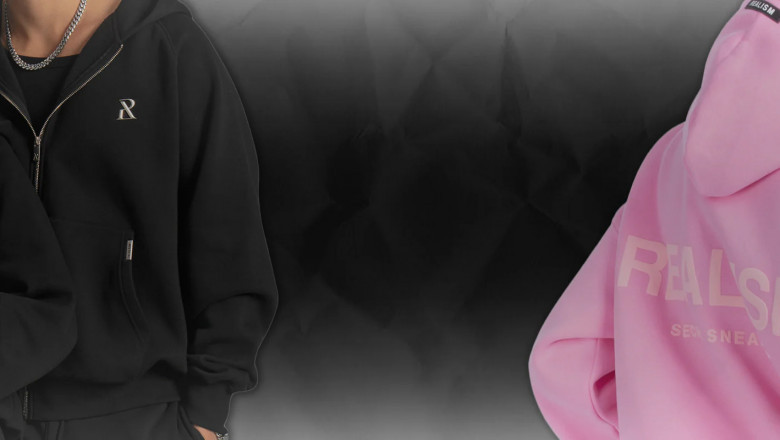views
Realism Clothing: A Movement Towards Authentic Expression
In the ever-evolving world of fashion, trends come and go with the seasons, often dictated by avant-garde innovation, celebrity influence, or viral media. Amidst the flux of high fashion and fast fashion, a quiet revolution has emerged—Realism clothing. More than a mere aesthetic, realism in clothing represents a philosophical approach that emphasizes authenticity, functionality, and the honest portrayal of everyday life. It is a counter-movement to the extravagant, often impractical styles that dominate runways, and instead, celebrates simplicity, truth, and the beauty of the mundane.
Origins and Philosophical Underpinnings
Realism in clothing draws inspiration from the broader Realist movement in art and literature that began in the 19th century, particularly in Europe. Artists and writers like Gustave Courbet and Émile Zola rejected romanticized depictions of life, instead choosing to portray ordinary people, working-class struggles, and authentic experiences. In fashion, realism adopts this same ethos—clothing should reflect real life, real bodies, and real needs.
The movement emerged more prominently in the late 20th and early 21st centuries as a reaction to both the extremes of haute couture and the environmental and ethical criticisms of fast fashion. As consumers grew more conscious of social issues and personal identity, realism clothing became a medium to express integrity, honesty, and relatability.
Key Characteristics of Realism Clothing
1. Function Over Fantasy
Realism clothing places emphasis on wearability and functionality. Unlike conceptual fashion that may prioritize dramatic silhouettes or impractical materials, realism is grounded in the real world. Clothes are designed to be lived in—whether it’s commuting, working, running errands, or relaxing at home.
2. Minimalism and Subtlety
The visual language of realism clothing is often minimalist. Neutral colors, clean lines, and understated details dominate collections. Brands embracing this style avoid flashy logos or unnecessary embellishments. Instead, they focus on the cut, fabric quality, and fit, echoing the idea that beauty lies in simplicity.
3. Everyday Inspiration
Realism fashion finds beauty in the everyday. Designers might draw inspiration from uniforms, streetwear, or traditional workwear. A mechanic’s jacket, a farmer’s overalls, or a factory worker’s boots become the starting points for design—reinterpreted for a modern context without stripping away their original essence.
4. Body Inclusivity
In contrast to fashion’s historical obsession with idealized body types, realism clothing celebrates the diversity of real bodies. The movement encourages inclusive sizing, relaxed fits, and clothing that complements rather than constrains the natural human form.
5. Sustainability and Ethical Production
Realism is inherently aligned with the values of sustainability and ethical labor practices. Many realism-oriented brands prioritize local manufacturing, slow fashion principles, and natural or recycled materials. This approach stands against the disposable culture of mass-produced, trend-driven garments.
Influential Designers and Brands
Several contemporary designers and labels have embraced realism clothing, helping to define and popularize the movement.
-
Margaret Howell (UK): Known for her utilitarian and timeless designs, Howell's collections are a masterclass in quiet sophistication. She emphasizes craftsmanship, comfort, and practical elegance.
-
A.P.C. (France): With a focus on clean-cut denim and minimalist wardrobe staples, A.P.C. has become synonymous with understated style that aligns with real-life utility.
-
Uniqlo (Japan): While not a luxury label, Uniqlo has been praised for offering realistic, affordable, and high-quality basics that serve a broad audience. Their LifeWear philosophy aligns closely with the principles of realism.
-
Lemaire (France): Christophe Lemaire's work features garments that blend fluid silhouettes with refined tailoring, striking a balance between utilitarian function and aesthetic pleasure.
-
Evan Kinori (USA): A smaller, artisan brand that produces limited-run collections using natural fibers, traditional techniques, and a slow fashion ethos.
Cultural and Social Impact
Realism Hoodie is not just about design; it's a cultural statement. In an era where social media promotes heavily filtered versions of reality, the fashion industry has often mirrored this tendency with exaggerated, idealized visions of beauty and lifestyle. Realism clothing counters this by fostering authentic self-expression and encouraging individuals to feel comfortable in their own skin.
This movement also intersects with the broader social currents of anti-consumerism, environmental awareness, and mental health advocacy. By promoting durable, versatile garments over transient trends, realism fashion advocates for mindful consumption and emotional well-being—wearing clothes that feel good both physically and psychologically.
Realism in Fashion Media
Realism clothing has influenced not only design but also fashion media and photography. Editorial shoots and campaigns increasingly feature real people instead of professional models, natural lighting instead of studio glitz, and unedited images over airbrushed perfection. Social media accounts and fashion blogs focused on realism often highlight outfits worn in genuine settings—home offices, city streets, public transport—rather than stylized fantasy locations.
Challenges and Criticisms
Despite its many positives, realism clothing also faces challenges. The understated nature of the designs can be perceived as boring or unimaginative, particularly in an industry that thrives on visual impact. Additionally, high-quality realism garments often come at a higher price point, limiting access for some consumers despite the movement’s inclusive ideology.
There’s also the danger of co-optation. As realism becomes more mainstream, some brands may adopt its aesthetic superficially—offering "authentic" looks without adhering to its deeper values of ethical production and sustainability.
The Future of Realism Clothing
As the fashion industry grapples with ecological, economic, and cultural change, realism clothing is poised to play a growing role. Its principles align with the urgent needs of our time—conscious consumption, respect for diversity, and a return to human-centered design. While it may never dominate high fashion runways, realism’s influence is evident in the rising popularity of capsule wardrobes, slow fashion, and the growing demand for transparency in the supply chain.














Comments
0 comment